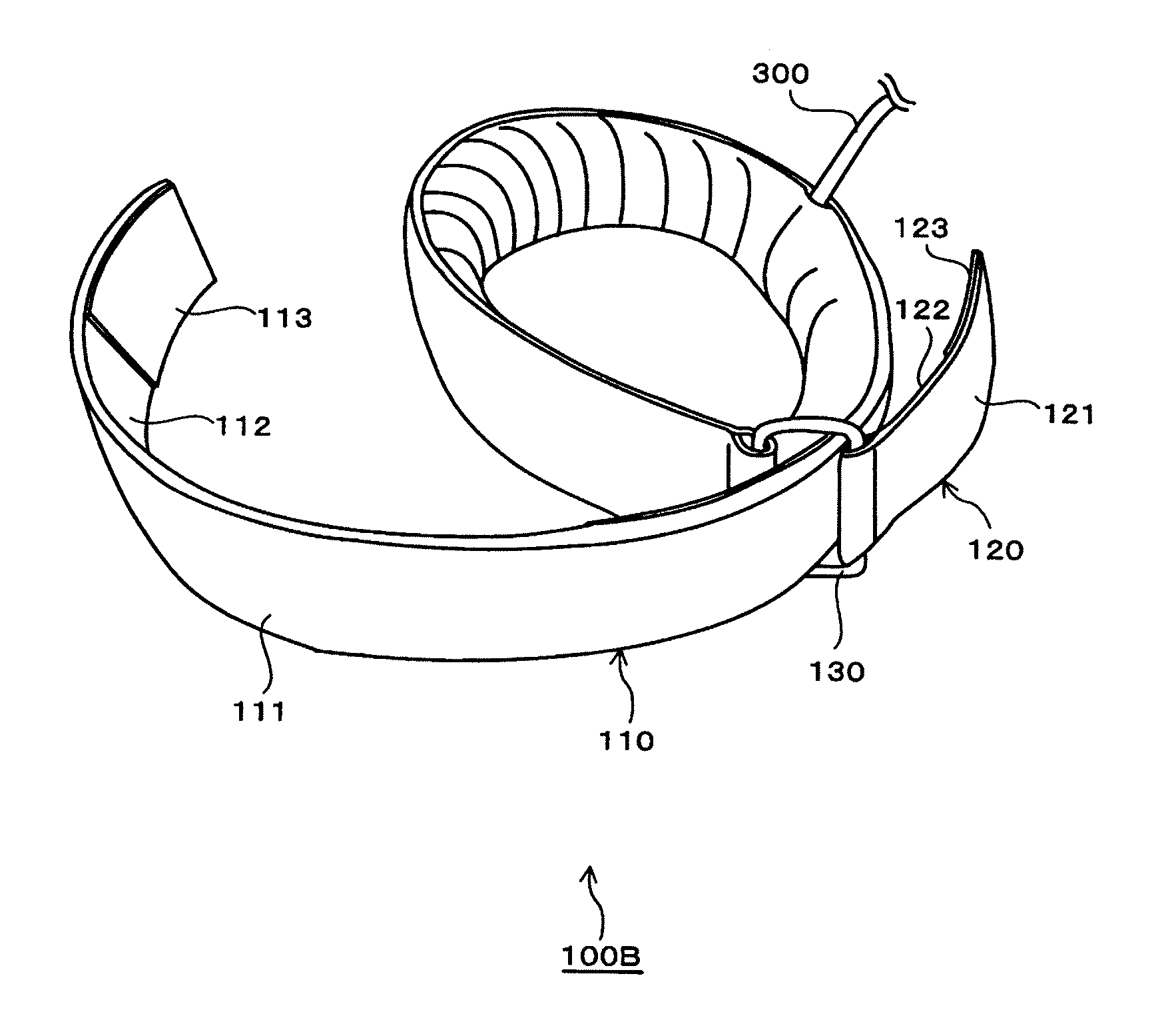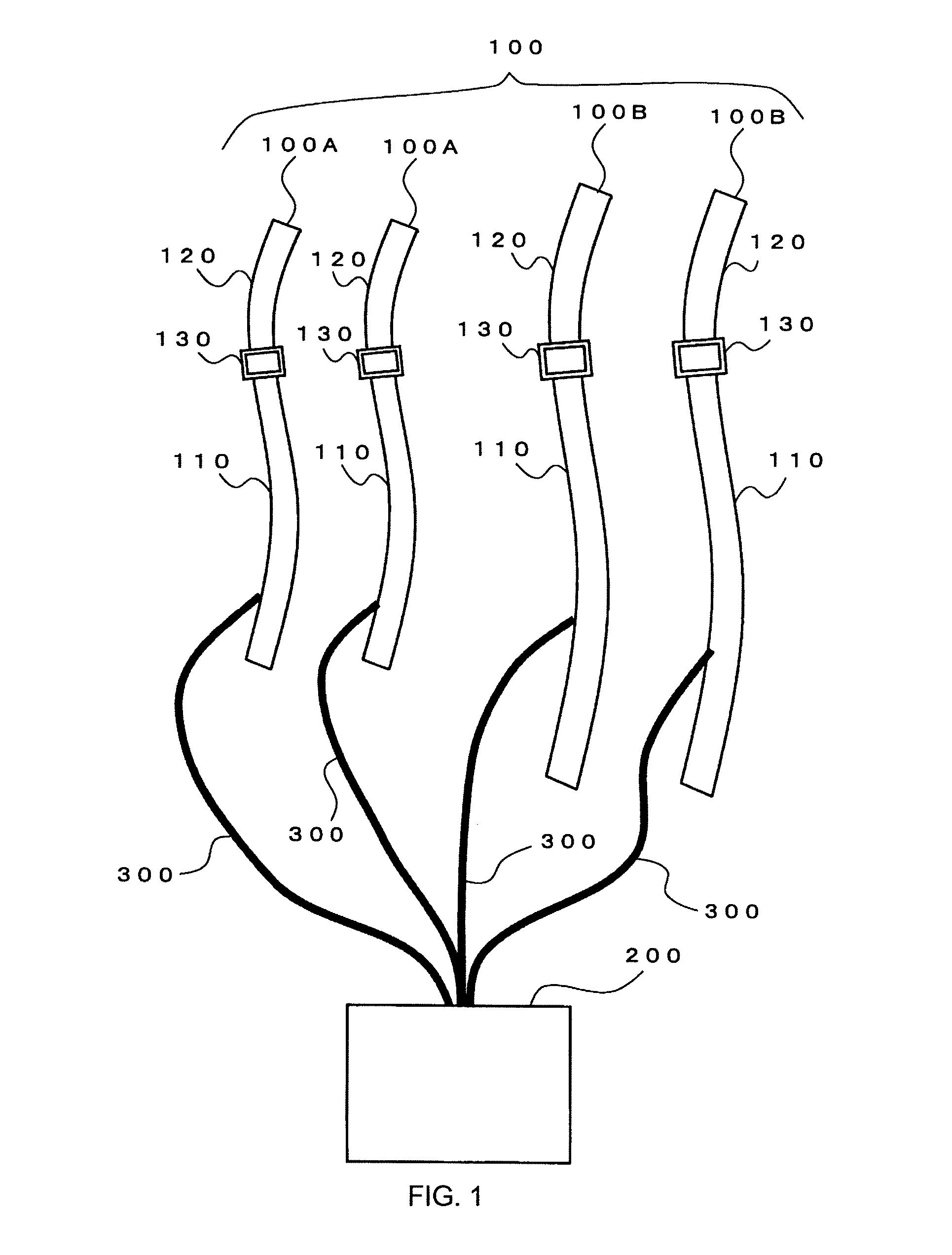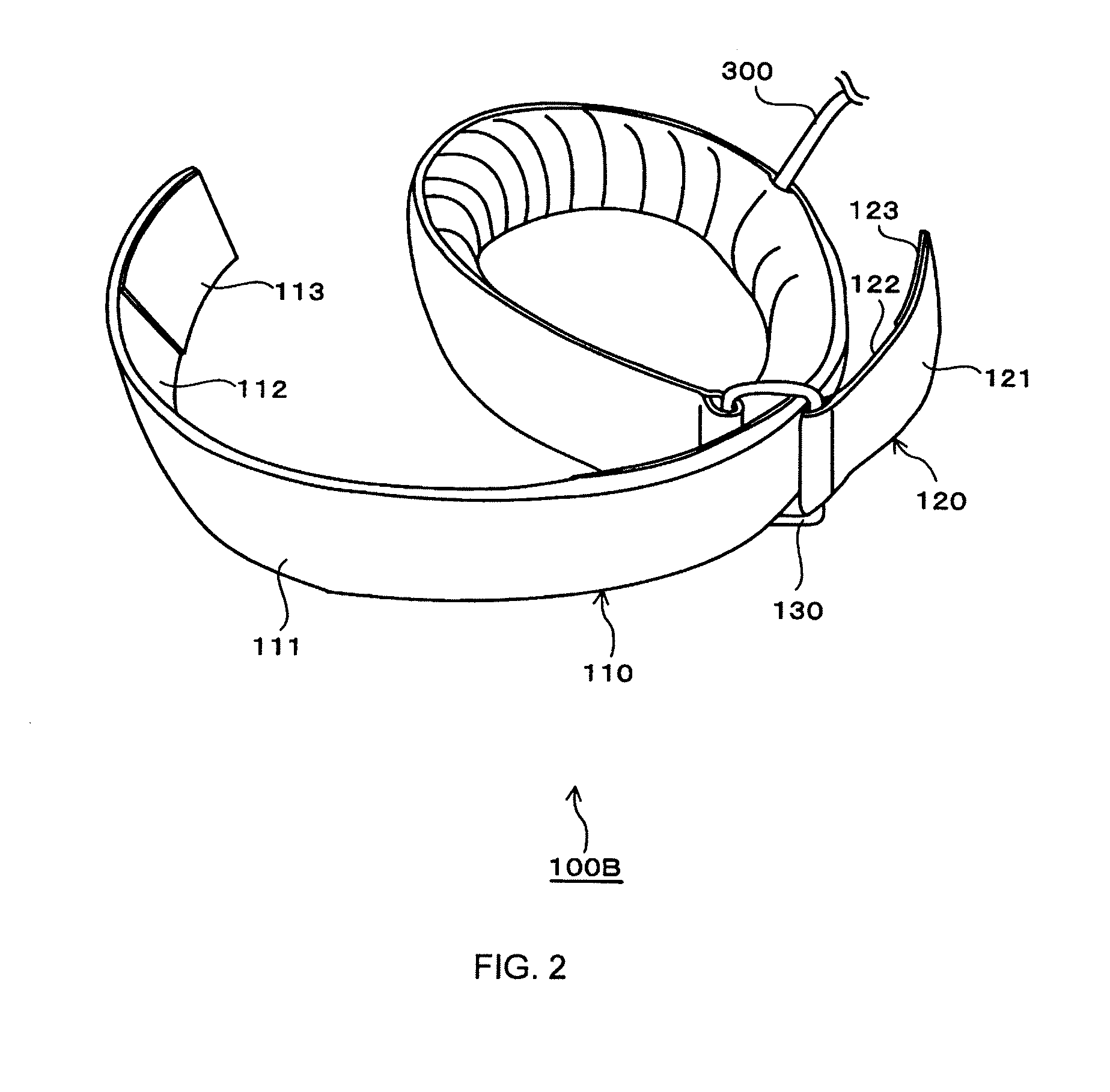Muscle Training Apparatus and Belt for Muscle Training
a training apparatus and muscle technology, applied in the field of muscle training apparatus and belt for muscle training, can solve the problems of increasing the burden on muscles and joints, slow-twitch muscle fibers are limited in their potential for growth, and fast-twitch muscle fibers require a significant amount of exercises, so as to prevent stretch
- Summary
- Abstract
- Description
- Claims
- Application Information
AI Technical Summary
Benefits of technology
Problems solved by technology
Method used
Image
Examples
first embodiment
[0072]FIG. 1 is a view schematically showing the entire configuration of a KAATSU muscle training apparatus according to a first embodiment of the present invention.
[0073]As shown in FIG. 1, the KAATSU muscle training apparatus according to this embodiment comprises a belt 100 and a main device 200. Each component of the belt 100 is designed so that it can be connected to the main device 200 through, for example, a connecting pipe 300 comprised of a rubber tube.
[0074]The belt 100 in this embodiment comprises a plurality of, more specifically, four components as shown in FIG. 1. The reason why there are four components of the belt 100 is to allow secure placement of the components of the belt 100 on the arms and legs, respectively, of a person (user) who uses the KAATSU muscle training method. The components of the belt 100 are tightened around a predetermined range (target compressed site) near the proximal portion of the arms and legs of the user.
[0075]Of the four components of the...
second embodiment
[0150]A belt 500 for the KAATSU muscle training in a second embodiment is shown in FIG. 10.
[0151]In short, the belt 500 in the second embodiment is equivalent to the belt 100 in the first embodiment except that there is no inflatable pneumatic bag 114. Accordingly, the belt 500 in the second embodiment is not intended to be combined with the main device 200.
[0152]The belt 500 in the second embodiment has no inflatable pneumatic bag, so that there is no air pressure of the inflatable pneumatic bag that can be used for changing the compression force to be applied to the target compressed site by the belt 500.
[0153]The belt 500 in the second embodiment is different from the belt 100 in the first embodiment only in the structure of the first band-shaped member 110, as shown in FIG. 10. The first band-shaped member 110 of the belt 500 has the thick fabric 111 and the thin fabric 112, as in the case of first band-shaped member 110 in the first embodiment, but they are joined to each other...
PUM
 Login to View More
Login to View More Abstract
Description
Claims
Application Information
 Login to View More
Login to View More - R&D
- Intellectual Property
- Life Sciences
- Materials
- Tech Scout
- Unparalleled Data Quality
- Higher Quality Content
- 60% Fewer Hallucinations
Browse by: Latest US Patents, China's latest patents, Technical Efficacy Thesaurus, Application Domain, Technology Topic, Popular Technical Reports.
© 2025 PatSnap. All rights reserved.Legal|Privacy policy|Modern Slavery Act Transparency Statement|Sitemap|About US| Contact US: help@patsnap.com



